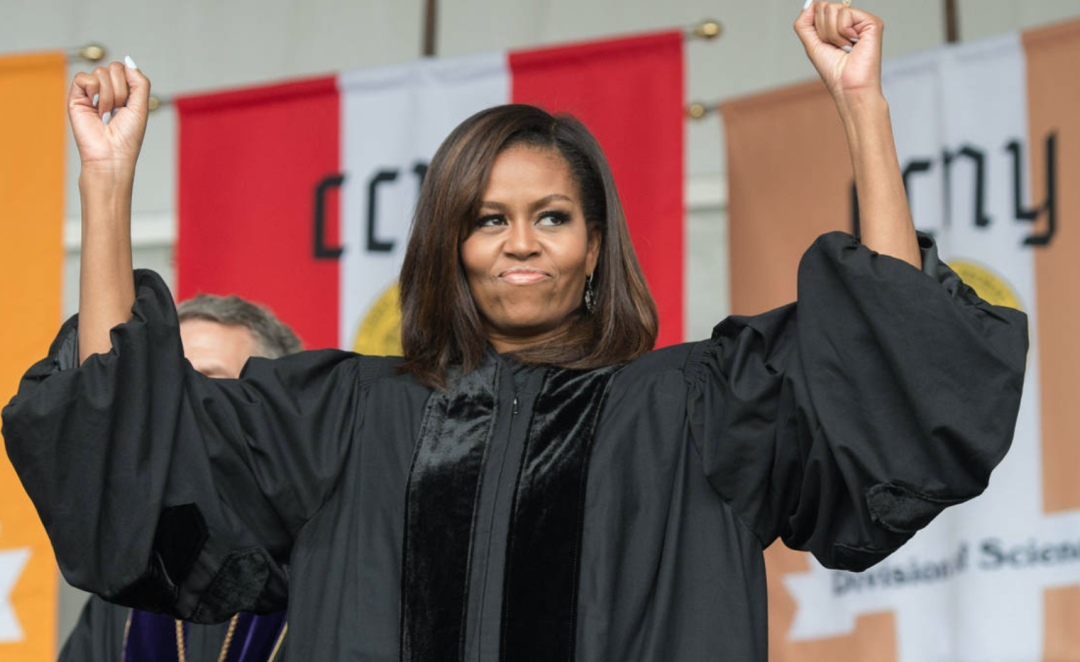by
_____
On this day in 2016, she stepped up to the podium at the 170th commencement at City College of New York. She warmly congratulated the parents and family. She thanked the administration. She lavished praise on the graduates.
Then she set off a firestorm.
It was Michelle Obama’s final commencement address as First Lady of the United States.
As she spoke that day on the Great Lawn of the CCNY campus in Harlem, she spoke about the values of diversity. She talked about American history and the contributions of “hope-filled immigrants” who came to this country from all corners of the world.
“Maybe your family has been in this city for generations, or maybe, like my family, they came to this country centuries ago in chains,” she said. “Maybe they just arrived here recently, determined to give you a better life.”
And she talked about the history of the historic house where she now lived with her husband and daughters.
“Graduates,” she told them, “it’s the story that I witness every single day when I wake up in a house that was built by slaves, and I watch my daughters –- two beautiful, black young women -– head off to school, waving goodbye to their father. . . “
It’s the story that I witness every single day when I wake up in a house that was built by slaves . . .
It wasn’t the first time she’d referred to the White House as a house “built by slaves.”
But the following month, in July 2016, she told the story again — this time at a nationally broadcast event, the Democratic National Convention in Philadelphia:
“The story of this country, the story that has brought me to this stage tonight, the story of generations of people who felt the lash of bondage, the shame of servitude, the sting of segregation, is the story of striving and hoping and doing what needed to be done so that today I wake up every morning in a house that was built by slaves.”
This time, her comments unleashed a hail of criticism from political opponents. Some said her remarks were “unpatriotic” and reflected her “disdain” for America.
Not everyone agreed. Others said Michelle Obama had used her observation to offer proof of the redemptive possibilities of America.
So was the White House actually built by slaves? Yes — in part.
Construction on the White House began in 1792, at a site between the slave states of Virginia and Maryland. The labor force was made up of both enslaved people and free blacks, in addition to local white laborers and immigrants from Scotland and Ireland.
As the White House Historical Association points out, the federal government did not actually own the slaves — but it did hire them from their masters.
The foundational role of slavery in the creation of this nation, and its legacy throughout the generations, have long been ignored, overlooked, and diminished. There have always been some who choose to look the other way.
As The Washington Post’s Callum Borchers saw that speech, Michelle Obama’s goal was not to cast shame, but rather “to celebrate the hard-fought changes that enabled African Americans to go from the White House’s enslaved laborers to its residents.”
“Don’t let anyone ever tell you that this country isn’t great,” she said that day.
Throughout her tenure as First Lady, Michelle Obama used public oratory as tool for clarifying our national values, for helping us to take pride in our evolving progress — and to celebrate how far we have come.
© Copyright 2020
________________________________
Want to talk? Reach me at dana@danarubin.com



